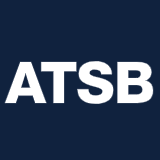Basically it's just a box ticking exercise for a regulator that doesn't care. You'll get no worthwhile rest in such a seat, but it's cheaper than having a proper crew rest setup.
In the days of FEOs, all of the SOs had to hold a restricted FE licence, so that they could sit in for him during rest periods. You were generally restricted to being in his seat for just the cruise part of the flight, though I recall being there once for landing when the FEO became ill. And each few months when your licence came up for renewal in the sim, there was an extra session for the SOs in the engineer's seat. It was a great way of learning more about the systems, from people who could take them apart, and put them back together again.
There were various setups in the -200s, 300s and SP, but there were bunks for two people to be off simultaneously, and the cabin wasn't used.
I don't know the details of the 757, but they're very much mini 767s, and I have at least one 11 hour sector in the 767. I wouldn't be surprised if it had equally long legs. It was a great aircraft, that was intended to replace the 737. Such a pity that didn't come to pass.















